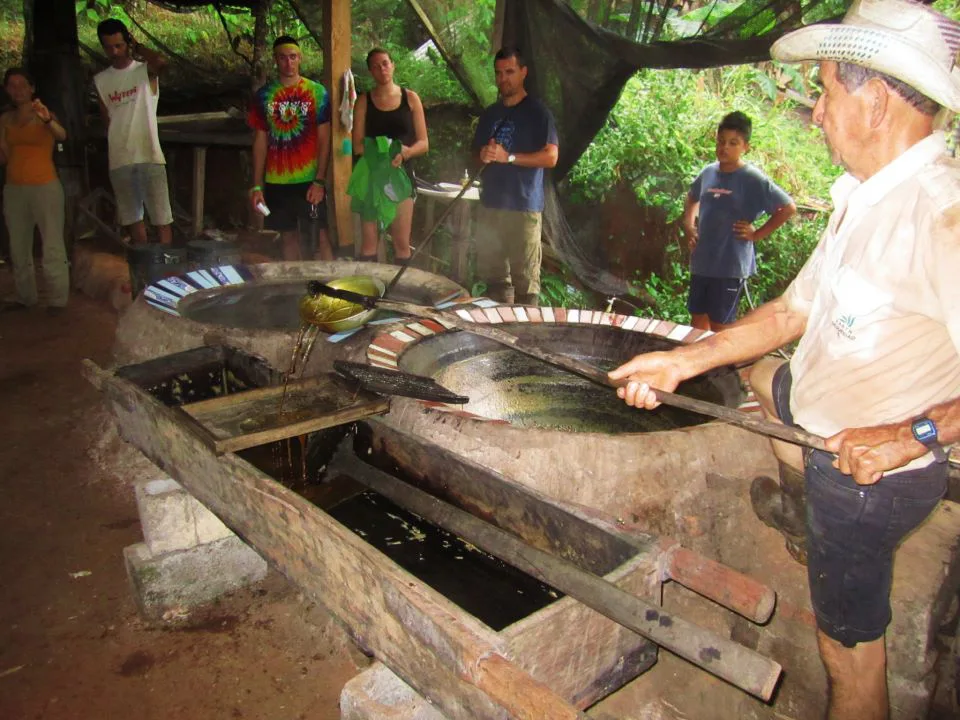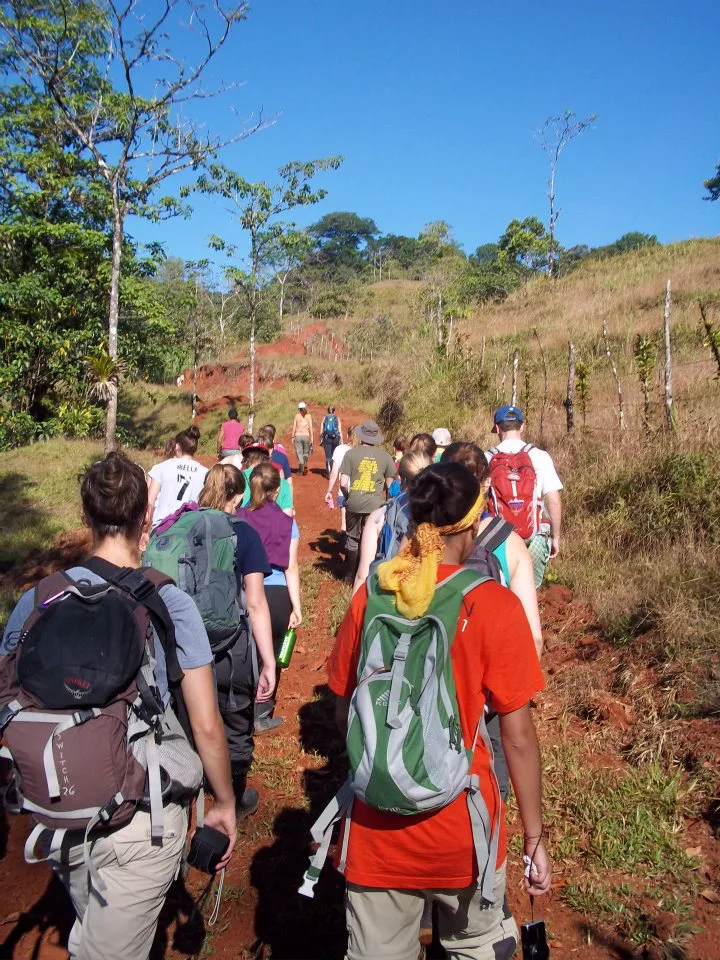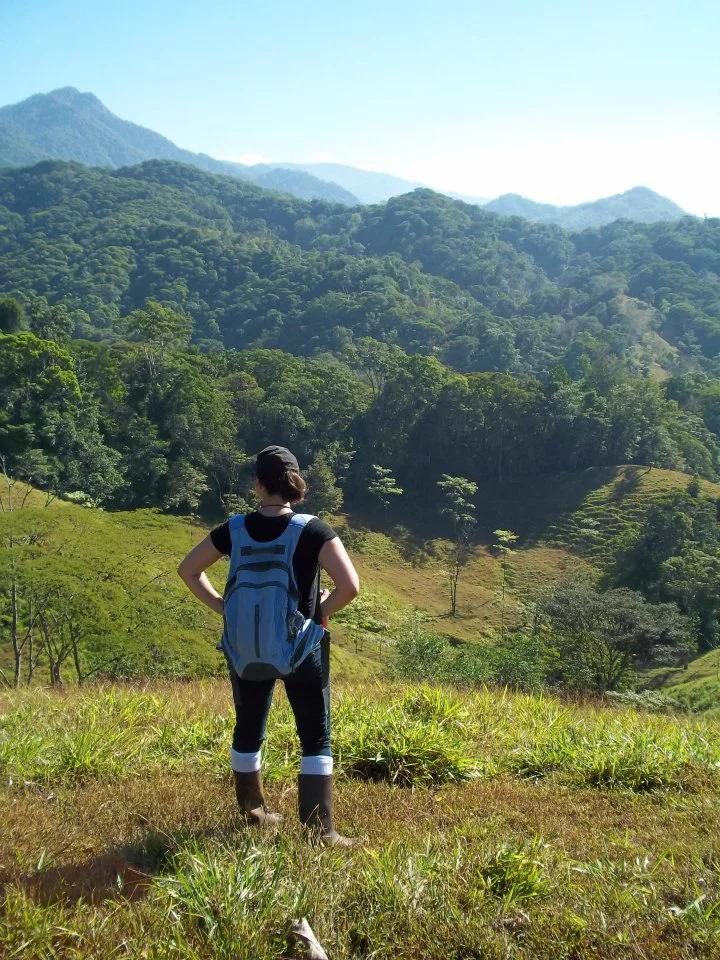Vida at its Purest: My Stay in El Sur
There was a hole in my rubber boot. Being one of the 34 sodden students crossing the small yellow creek, this was a less than thrilling discovery for me. We were in the tiny community of El Sur, Costa Rica, a town of about 60 people. Our purpose for trudging through the rain was to observe the old fashioned method of grinding sugarcane in the town’s nearby sugar mill. I gripped my soggy umbrella and tried gingerly tip-toeing the rest of my way across the stream in order to avoid any more icy water rushing into my unreliable footwear. Through the sheets of rain I could see a small barn-like structure in the distance. A brown calf with enormous ears and glassy black eyes gazed at us curiously as we plodded in a sullen herd past its cozy-looking pen, probably wondering what strange type of cattle we were.

As we filed into the dank wooden mill, a few other girls and I tiredly plunked down on a bench and assessed our surroundings. In the center of the room was some sort of grinder with a large wheel attached to it. Two massive oxen yoked together, looking very bored, stood near the wheel, attached to the structure by a long wooden pole. A plump, smiling man in a rain soaked grey t-shirt gave us a brief introduction in Spanish, explaining the significance of the traditional sugar mill. He then proceeded to ask for volunteers to feed stalks of sugarcane into the grinder.
Two students hesitantly pushed the stalks into the mouth of the contraption, while a small boy with a long stick swatted the oxen to prompt them to walk in a wide circle around the room, thus turning the wheel and grinding the juice out of the sugarcane. It was a fascinating process, and I enjoyed watching the juice rush out of the stalks while the boy strutted importantly behind the oxen, eager to show off his control over the two lumbering beasts. After a pitcher was filled with juice, we each received a cup full of the sugary liquid. It had a sweet, woody taste that elicited grimaces from the faces of those who sampled it. The best part of the process was yet to come.
Two large vats were filled with the remaining sugar cane juice, and it was heated and stirred for about ten minutes while everyone gathered round to watch. Gradually the mixture began to thicken, and it was poured into a wooden trough where it cooled into a caramel colored, fudge-like consistency: sugarcane candy! Everyone helped themselves to spoonfuls of the delicious concoction. We were amazed at how quickly stalks of sugarcane could be transformed into creamy, sugary candy.
Soon it was time to move on to the place where bees were kept to produce honey. Using a small pocket knife, Ronald, a carpenter and beekeeper, cut up a glistening golden honeycomb and let every student have a gooey section to nibble on. I examined the beautiful pattern of the honeycomb and marveled at the amber liquid that oozed from it before popping it in my mouth.

Later, we hiked back to the main area of town and went to the “meeting house” where a few members of the community were seated to talk to us about the history of El Sur. Our large group sat attentively at tables, listening to the struggles of a town that has been through many transitions, from private property to agriculture, and now to ecotourism. As I listened, I couldn’t help but admire the current residents for remaining in tiny El Sur and making it an amazing place to experience.
The discussion was followed by a delicious dinner cooked by a few of the local women and hike planned by Edgardo, our tropical ecology professor. The hike was optional, but I wouldn’t have missed it for anything. At 7:30pm, the group of rubber boot-clad, headlamp-wearing students was ready to see the nightlife of El Sur. We were not disappointed. Almost everywhere I shone my light, I found a different species of tree frog or alien-like insect. Cries of “Edgardo!” every few minutes had our professor running from student to student as mysterious creatures were illuminated in the darkness.
I was in my element. I wanted to stay in the forest all night searching for new amphibians and reptiles, literally leaving no stone unturned. When the time finally came for us to turn around and head back, I straggled behind, trying to cast the beam of my headlamp on every surface and make just one more discovery. I heard the weary voice of one of my professors telling me to catch up with everyone lest I get left behind. Still filled with excitement over all of the events of the day and night, I hardly noticed the cold water that gushed into my rubber boot as I once again crossed the small stream.
The simple pleasures of watching sugarcane being transformed into candy, eating honey right off the comb, and catching incredible animals in the forest made me realize how little I need in life to be truly content. Just being out in nature gives me a sense of fulfillment that I hope to find in a career someday. The time I spent in El Sur, and Costa Rica in general, opened my eyes to the beauty and fragility of the natural world, and our responsibility to live in harmony with it.

Related Posts

Camila Rojas: Alumni Spotlight⭐

